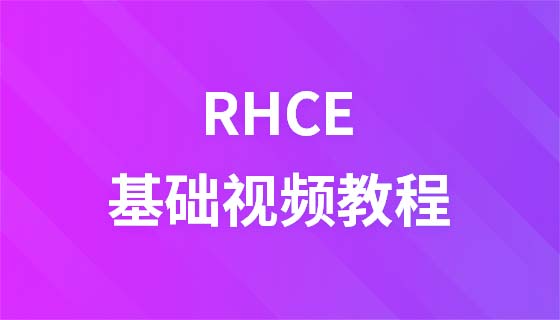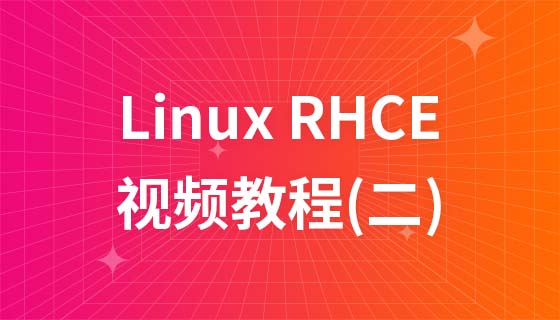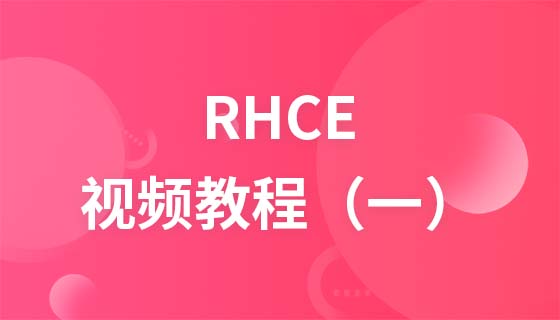
在基于spring boot和jpa的微服务架构中,实体之间通常存在一对一、一对多或多对多等复杂关联。当通过rest api查询某个主实体时,默认的json序列化机制(如jackson)可能会尝试序列化其所有关联的实体数据,即使这些关联被标记为fetchtype.lazy(懒加载)。这是因为懒加载仅控制数据的加载时机,当jackson尝试序列化一个jpa代理对象时,它会触发关联数据的加载,进而导致整个对象图被序列化并返回给前端。这种“过度暴露”不仅增加了网络传输负担,降低了api响应速度,还可能泄露不必要的数据,带来安全风险。
例如,如果前端仅需要学生列表,而学生实体与课程、成绩等实体存在关联,API却返回了每个学生的详细课程和成绩信息,这就是典型的过度暴露问题。
为了解决这一问题,我们可以采用多种策略来精细化控制REST API的JSON响应内容。
Jackson库提供了多种注解,可以直接在JPA实体上使用,以影响其JSON序列化行为。
@JsonIgnore注解是最直接的方式,用于标记某个字段在序列化时应被完全忽略。
适用场景: 当某个字段或关联属性在任何情况下都不应出现在API响应中时。
示例: 假设Student实体与Course实体存在一对多关系,我们希望在查询学生时,不返回其关联的课程列表。
import com.fasterxml.jackson.annotation.JsonIgnore;
import javax.persistence.*;
import java.util.List;
@Entity
public class Student {
@Id
@GeneratedValue(strategy = GenerationType.IDENTITY)
private Long id;
private String name;
@OneToMany(mappedBy = "student", fetch = FetchType.LAZY)
@JsonIgnore // 在序列化Student时,忽略courses字段
private List<Course> courses;
// 构造函数、Getter和Setter
public Student() {}
public Student(String name) { this.name = name; }
public Long getId() { return id; }
public void setId(Long id) { this.id = id; }
public String getName() { return name; }
public void setName(String name) { this.name = name; }
public List<Course> getCourses() { return courses; }
public void setCourses(List<Course> courses) { this.courses = courses; }
}
@Entity
public class Course {
@Id
@GeneratedValue(strategy = GenerationType.IDENTITY)
private Long id;
private String title;
@ManyToOne(fetch = FetchType.LAZY)
@JoinColumn(name = "student_id")
private Student student; // 假设Course也需要引用Student
// 构造函数、Getter和Setter
public Course() {}
public Course(String title, Student student) { this.title = title; this.student = student; }
public Long getId() { return id; }
public void setId(Long id) { this.id = id; }
public String getTitle() { return title; }
public void setTitle(String title) { this.title = title; }
public Student getStudent() { return student; }
public void setStudent(Student student) { this.student = student; }
}注意事项: @JsonIgnore会完全隐藏该字段,如果某些场景下又需要该字段,则此方法不适用。
在双向关联中,如果两边都尝试序列化对方,会导致无限循环引用(StackOverflowError)。Jackson提供了@JsonManagedReference和@JsonBackReference来解决此问题。
适用场景: 实体间存在双向关联,需要避免序列化时的循环引用。
示例: 继续使用Student和Course的例子,但现在Course也引用了Student。
import com.fasterxml.jackson.annotation.JsonManagedReference;
import com.fasterxml.jackson.annotation.JsonBackReference;
import javax.persistence.*;
import java.util.List;
@Entity
public class Student {
@Id
@GeneratedValue(strategy = GenerationType.IDENTITY)
private Long id;
private String name;
@OneToMany(mappedBy = "student", fetch = FetchType.LAZY)
@JsonManagedReference // 标记为"管理"端,将正常序列化
private List<Course> courses;
// 构造函数、Getter和Setter
// ...
}
@Entity
public class Course {
@Id
@GeneratedValue(strategy = GenerationType.IDENTITY)
private Long id;
private String title;
@ManyToOne(fetch = FetchType.LAZY)
@JoinColumn(name = "student_id")
@JsonBackReference // 标记为"反向"端,将不序列化,避免循环
private Student student;
// 构造函数、Getter和Setter
// ...
}通过这种方式,当序列化Student时,其courses列表会被序列化;而当序列化Course时,其student字段则不会被序列化,从而打破循环。
@JsonView允许您定义不同的“视图”,并为实体字段指定它们属于哪个视图。在API控制器中,可以指定使用哪个视图进行序列化。
适用场景: 同一个实体在不同API或不同用户角色下需要返回不同字段集时。
示例: 定义视图接口:
public class Views {
public static class Public {} // 公开视图
public static class Internal extends Public {} // 内部视图,包含公开视图的所有字段
public static class Admin extends Internal {} // 管理员视图
}在实体中标记字段所属视图:
import com.fasterxml.jackson.annotation.JsonView;
import javax.persistence.*;
import java.util.List;
@Entity
public class Student {
@Id
@GeneratedValue(strategy = GenerationType.IDENTITY)
@JsonView(Views.Public.class) // ID在公开视图中可见
private Long id;
@JsonView(Views.Public.class) // 姓名在公开视图中可见
private String name;
@JsonView(Views.Internal.class) // 课程列表仅在内部视图中可见
@OneToMany(mappedBy = "student", fetch = FetchType.LAZY)
private List<Course> courses;
@JsonView(Views.Admin.class) // 敏感信息仅在管理员视图中可见
private String sensitiveInfo;
// 构造函数、Getter和Setter
// ...
}在Controller中使用@JsonView:
import org.springframework.beans.factory.annotation.Autowired;
import org.springframework.web.bind.annotation.*;
import com.fasterxml.jackson.annotation.JsonView;
@RestController
@RequestMapping("/students")
public class StudentController {
@Autowired
private StudentRepository studentRepository;
@JsonView(Views.Public.class)
@GetMapping("/{id}/public")
public Student getStudentPublic(@PathVariable Long id) {
return studentRepository.findById(id).orElse(null);
}
@JsonView(Views.Internal.class)
@GetMapping("/{id}/internal")
public Student getStudentInternal(@PathVariable Long id) {
return studentRepository.findById(id).orElse(null);
}
@JsonView(Views.Admin.class)
@GetMapping("/{id}/admin")
public Student getStudentAdmin(@PathVariable Long id) {
return studentRepository.findById(id).orElse(null);
}
}通过访问不同的URL,可以获取到包含不同字段集的学生信息。
数据传输对象(DTO)模式是解决JPA实体与API响应解耦最推荐和最灵活的方式。DTO是专门为API响应设计的POJO,它只包含前端所需的数据,不包含任何JPA或业务逻辑。
适用场景:
实现方式:
示例: 定义一个StudentDTO,只包含id和name:
// DTO类
public class StudentDTO {
private Long id;
private String name;
// 构造函数
public StudentDTO(Long id, String name) {
this.id = id;
this.name = name;
}
// Getter和Setter
public Long getId() { return id; }
public void setId(Long id) { this.id = id; }
public String getName() { return name; }
public void setName(String name) { this.name = name; }
}在Controller中使用DTO:
import org.springframework.beans.factory.annotation.Autowired;
import org.springframework.web.bind.annotation.*;
@RestController
@RequestMapping("/students")
public class StudentController {
@Autowired
private StudentRepository studentRepository;
@GetMapping("/{id}/dto")
public StudentDTO getStudentDTO(@PathVariable Long id) {
Student student = studentRepository.findById(id).orElse(null);
if (student != null) {
// 手动映射
return new StudentDTO(student.getId(), student.getName());
}
return null;
}
@GetMapping("/all/dto")
public List<StudentDTO> getAllStudentsDTO() {
List<Student> students = studentRepository.findAll();
return students.stream()
.map(s -> new StudentDTO(s.getId(), s.getName()))
.collect(Collectors.toList());
}
}使用映射库(如MapStruct)的优势: 对于复杂的映射,手动编写代码会变得冗长且易错。MapStruct是一个代码生成器,可以在编译时自动生成映射代码,大大简化了DTO的映射工作。
// MapStruct Mapper接口
import org.mapstruct.Mapper;
import org.mapstruct.Mapping;
import org.mapstruct.factory.Mappers;
@Mapper(componentModel = "spring") // Spring组件
public interface StudentMapper {
StudentMapper INSTANCE = Mappers.getMapper(StudentMapper.class);
@Mapping(target = "id", source = "id")
@Mapping(target = "name", source = "name")
StudentDTO toDto(Student student);
List<StudentDTO> toDtoList(List<Student> students);
}在Controller中注入并使用:
@RestController
@RequestMapping("/students")
public class StudentController {
@Autowired
private StudentRepository studentRepository;
@Autowired
private StudentMapper studentMapper; // 注入MapStruct生成的Mapper
@GetMapping("/{id}/dto-mapstruct")
public StudentDTO getStudentDtoMapStruct(@PathVariable Long id) {
Student student = studentRepository.findById(id).orElse(null);
return studentMapper.toDto(student);
}
}在Spring Boot REST API中,有效管理JPA实体关联的序列化是构建高性能、安全且易于维护的应用程序的关键。通过灵活运用Jackson提供的@JsonIgnore、@JsonManagedReference/@JsonBackReference、@JsonView等注解,以及采用数据传输对象(DTO)模式,开发者可以精确控制API响应内容,避免不必要的数据过度暴露。对于大多数生产级应用,DTO模式因其解耦性、灵活性和可维护性而成为首选方案,而Jackson注解则可作为辅助手段或适用于更简单的场景。选择最适合您项目需求的策略,将显著提升API的质量和用户体验。
以上就是优化Spring Boot REST API响应:避免JPA关联数据过度暴露的详细内容,更多请关注php中文网其它相关文章!

每个人都需要一台速度更快、更稳定的 PC。随着时间的推移,垃圾文件、旧注册表数据和不必要的后台进程会占用资源并降低性能。幸运的是,许多工具可以让 Windows 保持平稳运行。




Copyright 2014-2025 https://www.php.cn/ All Rights Reserved | php.cn | 湘ICP备2023035733号